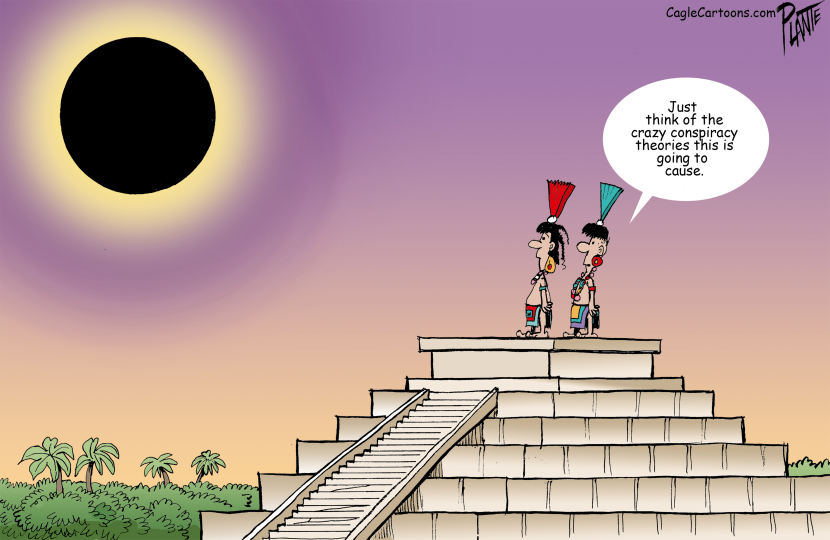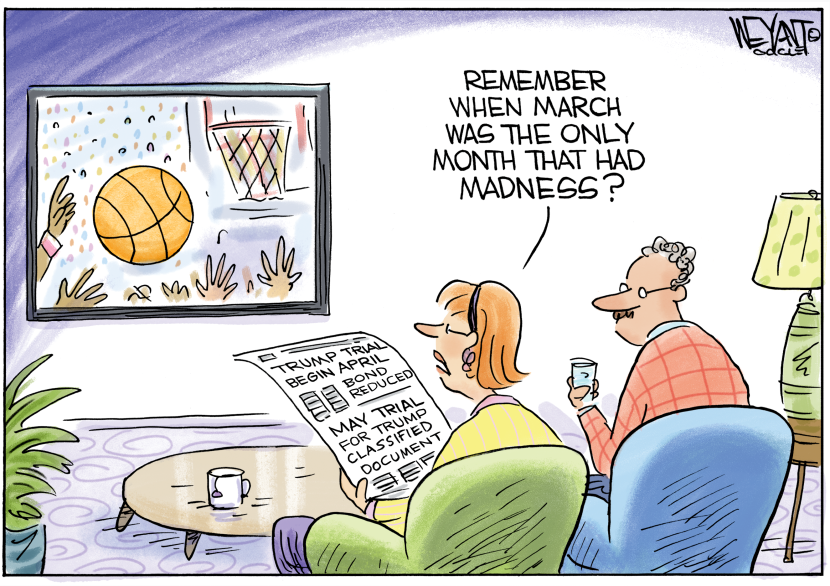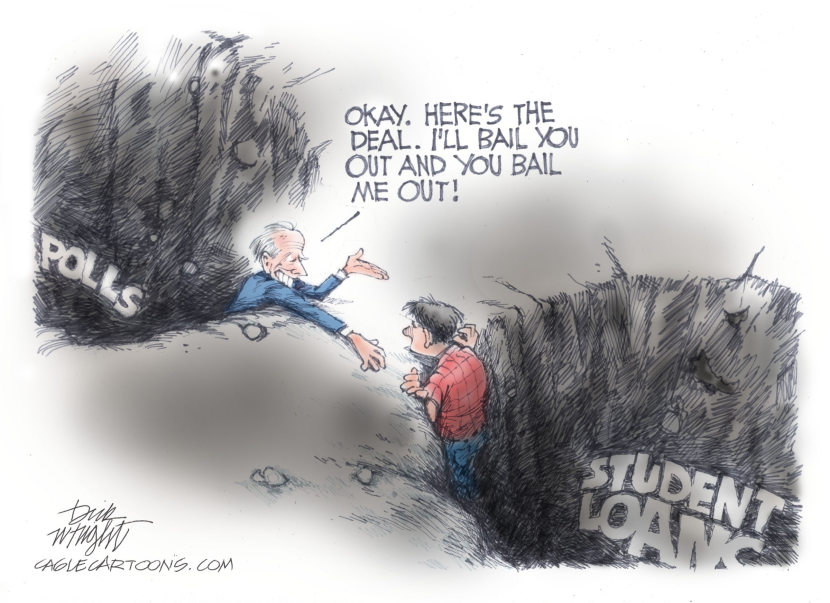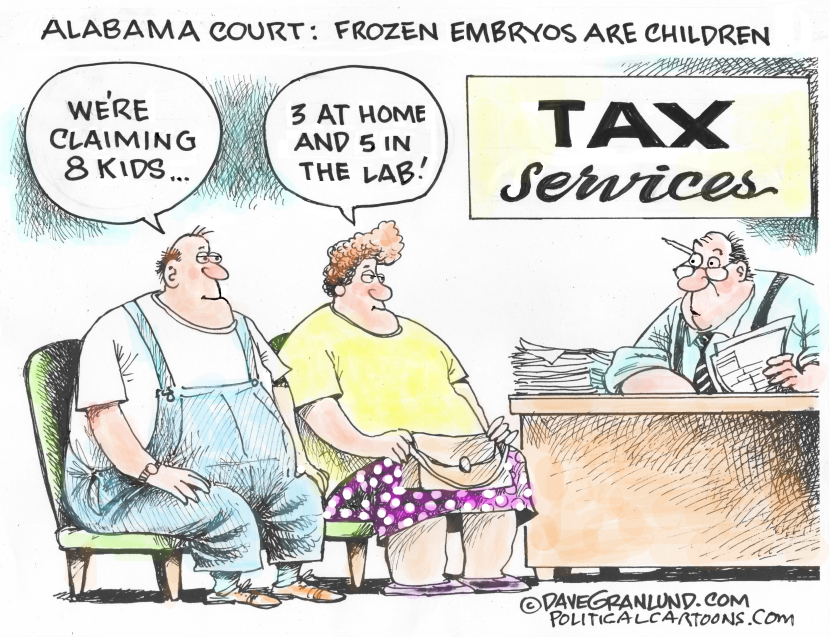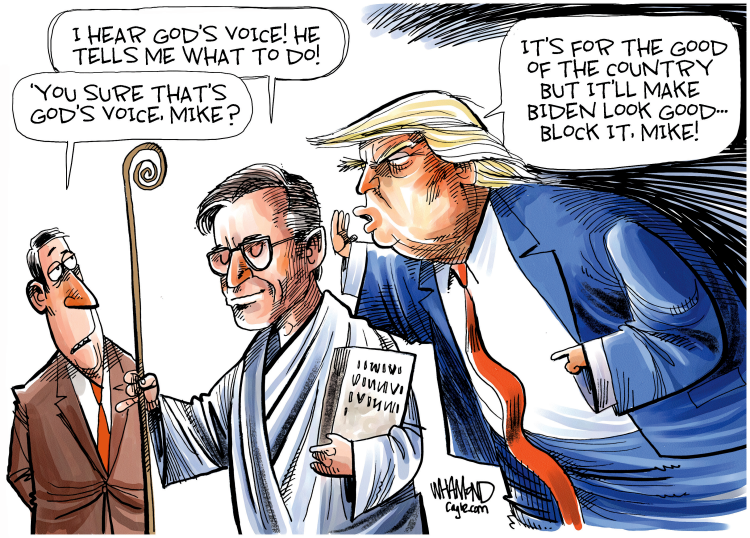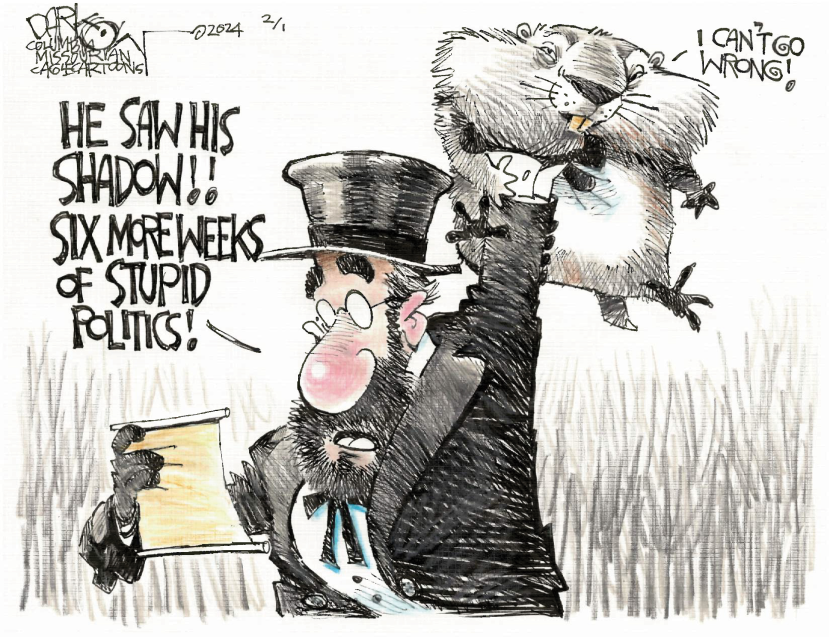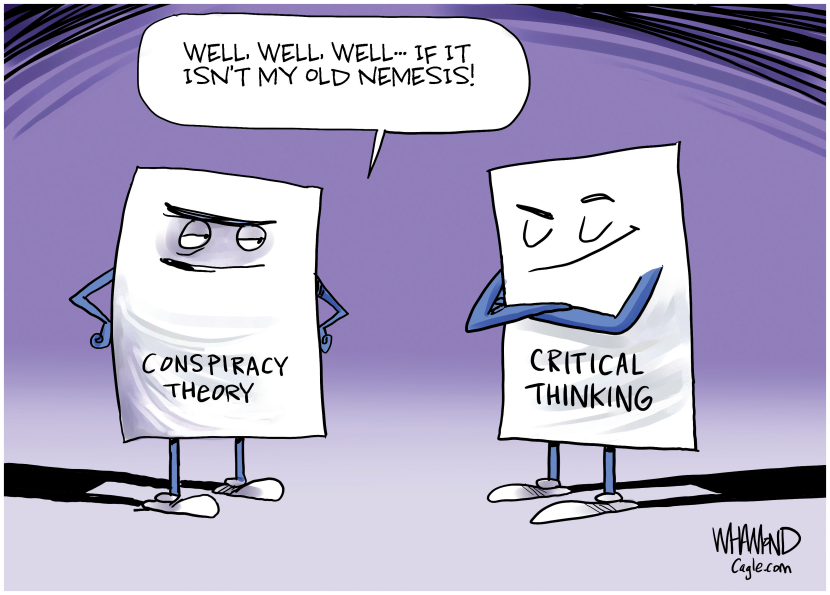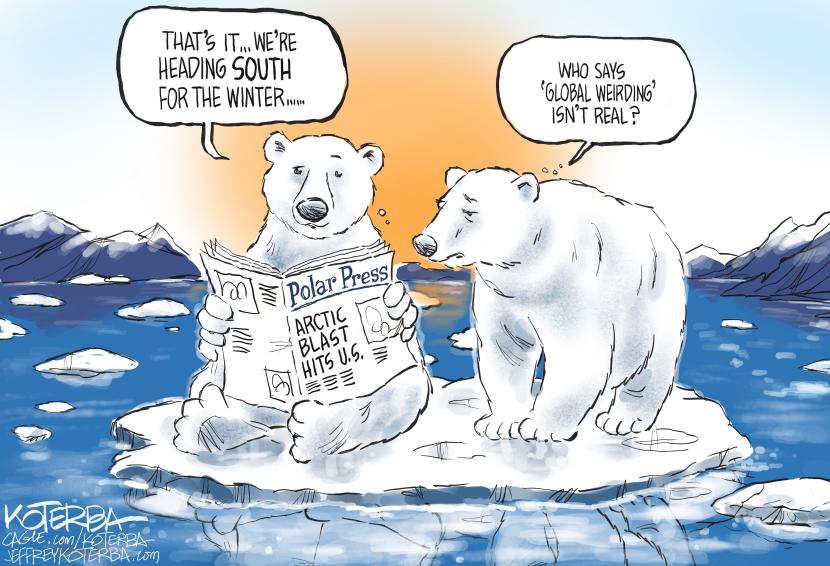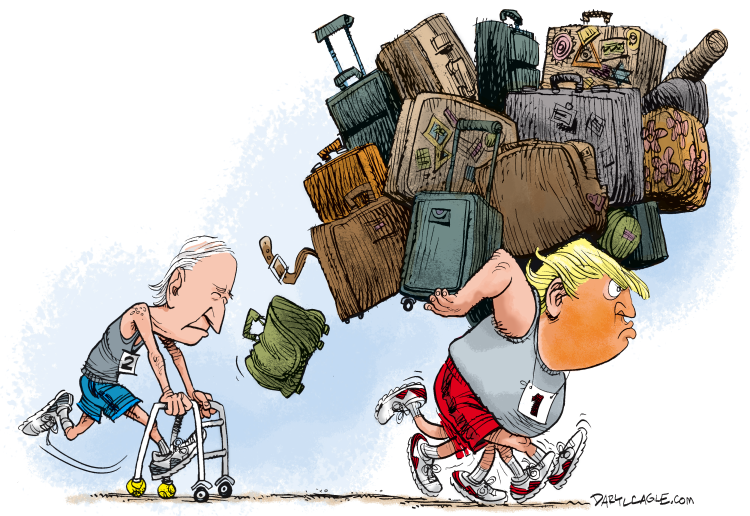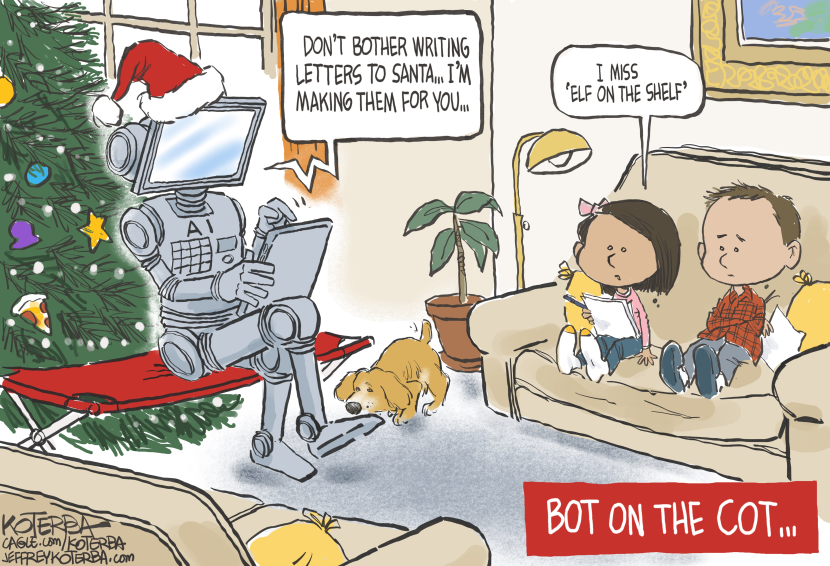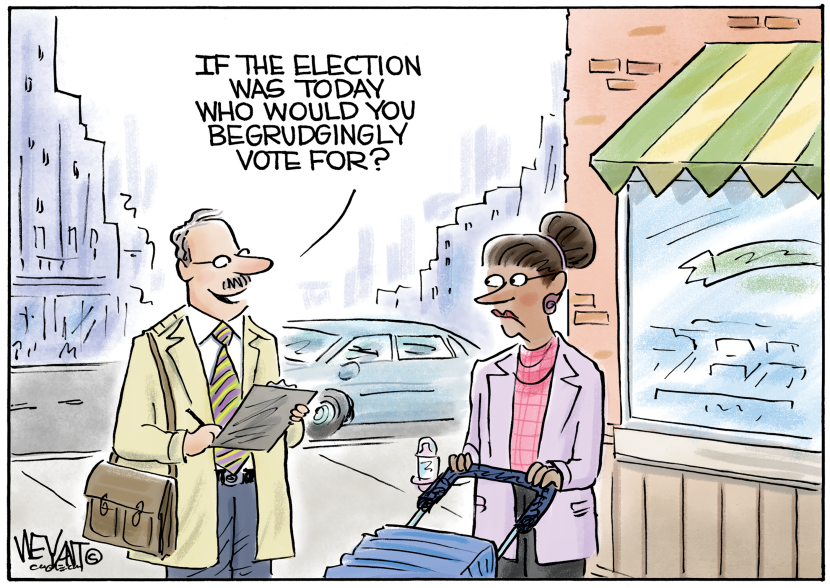Here are three recent cartoons from Mana Neyestani, the Iranian cartoonist who was jailed by the government for his cartoons, and who fled Iran to Malaysia.  Read more about Mana here and see the cartoon that landed him in jail.  (Thanks to Nik Kowsar.)
Iran Cartoons from Mana
Cartoons and Reports from Iran
I just had an interesting telephone conversation with my friend, Nik Kowsar. Nik was a top editorial cartoonist in Iran until his cartoons became too much of an irritant to the regime and he was thrown into the notorious Evin Prison. Nik left Iran for Canada where he now lives and he works for Radio Zamaneh, based in Holland. A selection of Nik’s recent cartoons about the election turmoil in Iran is posted below.

Nik tells me he is not optimistic about prospects in Iran in the short term. He’s been working with a group of Iranian ex-pats to confirm information that is pouring out of Iran now that the government is cracking down on protestors. Nik’s group will be putting up a new web site in the next few days, with the latest, vetted news from sources in Iran.
Nik has been keeping in close touch with many Iranian bloggers, who are drying up as sources as they are “detained” by the regime. Popular social networking sites like Facebook and Twitter have been blocked in Iran. My cagle.msnbc.com site has long been blocked in Iran. However, the Internet is still available in Iran and people are finding ways to get their e-mail out to the rest of the world.
Nik tells me that vetting the reports is often difficult. He gave me an example of a photograph of a baby that had been shot in the back that came to him from multiple sources, reportedly shot by Iranian government “goon squads.” In fact, the photo was from Gaza. When information is passed around on the web, it can take on a life of it’s own ““ making Nik’s job a tough one.
Nik also gave me an update on Mana Neyestani, the Iranian cartoonist that I reported on a couple of years ago, here in my blog. Mana drew a cartoon of a bug that was interpreted to be an ethnic slur, and he was thrown in prison. Mana escaped Iran but found it difficult to get political asylum; he is currently fine, and attending college on a student visa in Malaysia. Nik will soon be sending along some recent cartoons from Mana for the blog.
See an archive of Nik Kowsar’s cartoons here.



The Future of Political Cartoon Syndication
I was asked to speak about the future of syndication on panels at the National Cartoonists Society convention this week and the Association of American Editorial Cartoonists convention in July. The subject is a burning issue for cartoonists ““ burning a hole in the wallets of many cartoonists, as newspapers seem to be fading away before our eyes.

The best-known editorial cartoonists have always been the cartoonists with the biggest list of syndicated client newspapers. Fifty years ago, when there were two or three times as many political cartoonists and the newspaper industry was thriving, newspapers would purchase individual subscriptions to star cartoonists from syndicates that were like cartoon boutiques with exclusive content. The cartoonist would mail his cartoon to his syndicate, who would print the cartoon on paper and re-mail it to all of the subscribing newspaper editors, in big envelopes stuffed with the other boutique, exclusive features that each editor subscribed to and slowly received, days after the news was fresh.
It would have been difficult for a cartoonist to self syndicate in those days because delivery and billing was a big job; there were efficiencies of scale for the syndicates, who had ambitious printing, mass postal mailing operations and sales forces that were constantly visiting editors.
In recent decades the individual sales have given way to “packages” of groups of cartoonists. It is cheaper and easier for an editor to subscribe to a group of cartoonists, with one monthly invoice for the whole group, than to keep track of individual subscriptions. By the 1980’s and 1990’s, competition between the packages had driven the prices for editorial cartoons down to alarmingly low levels, leading cartoonists to complain about the collapse of their profession.
In fact, it was almost impossible for a cartoonist to sell his own work to newspapers. If an editor could subscribe to the Copley News Service package of twelve great cartoonists for $24 per week, there was no sense in talking to an individual cartoonist about subscribing to only his work for $2 per week. The price for editorial cartoons had fallen so low that it would be embarrassing for an editor to even discuss price with a single cartoonist.
I started my little syndicate in 2000, at what seemed to be a terrible time, with ugly low prices and disinterested, unmotivated editors in an oversaturated market. But I had an edge; the other big syndicates were slow in transitioning from postal mail delivery to e-mail delivery, and had no download Web sites for their newspaper editors. I was the first to put up a nice download site, where the cartoonists uploaded their own cartoons, and the cartoons appeared immediately when they were drawn. We also delivered the cartoons by e-mail, and I assembled a group of great cartoonists to compete as a package, against the other packages. It worked and we built an impressive list of over 600 newspaper subscribers in the first three years. (Today we have about 900 subscribers.)

Now that newspapers are failing, circulation is dropping, editors are cutting expenses anywhere they can, and prices for editorial cartoons couldn’t fall any lower, the future looks even bleaker for political cartoonists. A few years ago it looked like the Internet would be our salvation. There are some Web sites that are good customers, but sales to the Web have turned out to be a disappointment. There is no culture of paying for content on the Web. Advertising with content on the Internet pays a pittance. The Web is a dud.

Many cartoonists thought that animated editorial cartoons would be our future. The Pulitzer committee certainly thought so, picking three animated editorial cartoonists as winner and runners up recently when animated editorial cartoons were on people’s minds. Some cartoonists do excellent work animating their cartoons, but with a handful of exceptions, there is no business plan in it. No matter how good the animated editorial cartoons are, they won’t work without clients who will pay for them. Some cartoonists stubbornly cling to idea that animation will be our salvation. I wish them luck.
We’re now seeing more cartoonists who are willing to work for free for Web sites, with the idea that this will somehow lead to a paying job. As editorial cartoonists are laid off from staff positions at declining newspapers, they continue to draw cartoons in syndication as they did when they had real jobs. Our profession seems to be transitioning into a hobby.
Ironically, political cartoons are now more popular than ever. We have a big audience for our Web sites. Cartoons still dominate newspaper editorial pages. Our annual Best Political Cartoons of the Year books are popular. High school and middle school kids have mandated state testing on political cartoons in every state and teachers teach to the tests, forcing millions of students to love our art form every night as they grind through their homework assignments.
The quality of work that editorial cartoonists are doing now has never been better. The product is great, the audience is there for the product, and the problem is the business plan.
What the Future Holds “¦

We see two big trends in our little business. First is the decline in newspaper clients ““ what used to be the whole reason for drawing editorial cartoons.
Second, we’re seeing growth in strange, oddball subscribers. Our new subscribers and pay per use customers come from all over the globe, like Southeast Asia, Arab countries, Eastern European countries, places we would never expect. And they are all different kinds of companies, including foreign newspapers, magazines, newsletters, book publishers, TV stations and oddball Websites. These are customers who find us because we’re easy to find on the Web (search Google for “political cartoon” or “editorial cartoon” and we come up first). Most of new customers are overseas, their numbers are growing and there are enough of them to make up for our losses in newspapers, keeping our little business stable and making us optimistic about continued growth.
The new, oddball customers have something in common, they don’t comparison shop, they come to us and subscribe or purchase pay per use. They don’t know anything about other online cartoon sources like stock illustration houses, or other syndicates and they don’t care; we have enough content that they can find something they like.

In the old days syndicates knew just who to sell to – they all sold to the same list of newspaper editors, in a limited market, so it made sense that each syndicate had exclusive arrangements with their cartoonists, to differentiate their content from their competitors. Now there doesn’t seem to be so much value in exclusivity. A number of our cartoonists are non-exclusive and some are sold in other online stores or are represented by other syndicates ““ we’ve never heard from new clients who have noticed that.
It would seem that the new paradigm is to think of a syndicate like a store. A store in a good location has lots of customers who find the store. A store in a poor location draws few customers. Stores in different locations draw different customers.
Cartoonists are like producers who create products to put in the stores. Cartoonists should want their cartoons to be sold in as many different stores as possible, because those stores now have different customers.

Exclusive syndication deals now have less value to the syndicates and tie the hands of the cartoonists. The new paradigm for editorial cartoonists is to be resold in as many ways, in as many places as possible.
I think this is a future that many cartoonists will find difficult to accept. Cartoonists have always been drawn to the idea that a syndicate is a benevolent Mommy, who will take care of all the nasty business stuff while they can concentrate on their creative work; this is a model that hasn’t worked for most cartoonists and is even worse now, but cartoonists keep coming back to it and keep signing long term, exclusive contracts with old world syndicates.
From the syndicate’s or “store’s” point of view, it means we need to find a way of presenting our product to more, non-overlapping groups of customers on the Web. We’ve looked at sublicensing our content to be sold by another store, like Cartoonbank, but I think there is a basic problem with that. Once we hit the point of having enough content so that a customer can easily find a cartoon he likes, there is diminishing value to adding more content, or cartoonists. Putting more content into a store that already has plenty of content doesn’t make for more sales overall in that store. We need more stores, in different wrappers, in different places, reaching more potential customers in different ways. That’s our plan now.
I would expect to see more cartoonists getting together to start their own online stores and syndicates as I did – as Malcolm Mayes did with Artizans, and as Sarah Thaves did with Cartoonistsgroup. The barriers to entry are low in the Internet age. It won’t work for self-syndicating cartoonists to call the same 1,500 daily newspapers who are sick of getting so many sales calls, but I expect that more cartoonists will lay claim to bits of the vast, odd and foreign client potential on the Web.

My advice for 21st century editorial cartoonists is: draw a consistent, steady flow of great cartoons that are not about local events, with a global audience in mind. Sign non-exclusive deals with as many syndicates, online stores and stock houses that you can find, around the world, and allow those “stores” to sub-license your work through other “stores.” Have your own Web site where your work is easily available to any customer who is interested just in you, and publicize your site as best you can. Manage your work as a database of all your work. Your product is all your work from past years, not just what you’re drawing today; and when you join a new online store or syndicate, bring all your past cartoons with you so that your archive is easily accessible and can continue to generate sales of second rights. Don’t accept long term contracts with syndicates, agents or online stores; always be free to move. And don’t rely on anyone to take care of your career, but you.
————-
I look forward to seeing some comments on this screed. I plan on putting this into our next Best Political Cartoons of the Year book, with some changes in response to the comments. Maybe I’ll include some of the comments in the book.
Thanks,
Daryl
How To Draw Obama

How to Draw Obama
Obama seems like an easy guy to draw; he’s skinny, has a big chin, expressive eyebrows and lips. As it turns out, no matter how a cartoonist draws Obama, somebody gets mad.
When Obama burst into the presidential campaign cartoonists started drawing him as a caricature without much exaggeration. As time goes by, political figures morph in cartoons into caricatures of caricatures; George W. Bush shrank to knee height and grew huge bunny ears; Bill Clinton lost his pants and grew fatter (even as he got skinnier in real life). At the beginning of the Obama administration, everyone is watching to see how the cartoon Obama evolves.
I worked for twenty years as a cartoon illustrator, doing drawings for books, magazines and advertising. I was often given clear guidelines on how I was supposed to draw African-Americans: with “small noses” and “thin lips”. I was instructed to make any crowds of cartoon characters racially diverse, but only diverse in color, not in facial features. Thick lips and wide noses on African American faces would be returned to me for correction, with a polite reminder of the corporate policies on depictions of minority facial features.
Cartoonist Gary McCoy has been lambasted by readers, and by Salon.com, for drawing racially insensitive, big lips on Obama. Some cartoonists have drawn attention for giving Obama blue lips. Canadian cartoonist Patrick Corrigan of the Toronto Star had an Obama cartoon killed by his editor because of “racist” blue lips. Thomas “Tab” Boldt of the Calgary Sun and Cam Cardow of the Ottawa Citizen have also been rendering Obama with blue lips. Corrigan tells me that everyone in Canada, in the winter, has blue lips.
Readers of my blog explained to me that blue lips are racist and pointed out an old racist expression “blue gums,” which was a new one for me. Corrigan tells me he’ll be switching to purple lips, Cam will be giving up on the blue lips and Tab was laid off. That may mean the end of blue lips for Obama.
Syndicated caricaturist Taylor Jones also sees blue in Obama. He writes:
“One of the most interesting things about Obama’s eyes is the slight blue tinge to the flesh below his eyebrows. It’s also visible on his eyelids. It’s as though he’s wearing a bit of eye shadow. Don’t know if it’s actual blue pigmentation, or just the effect of light bouncing off the skin stretched against his eye sockets. But it adds a nifty touch whenever I’m drawing Obama’s caricature in color.”
I’m considering going all the way, making Obama completely blue (if that’s not racist).
Obama’s ears have grown huge for most cartoonists. George W. Bush’s ears also grew huge, but it took more than a year for Bush’s big ears to catch on — Obama’s ears started right away, and have been expanding faster than the national debt. It may be that after eight years of Bush, we now see huge ears as a standard, presidential attribute. I don’t see any particular reason for either Bush’s or Obama’s ears to grow in cartoons, but with cartoonist peer pressure it will soon be impossible to draw a likeness of Obama without colossal ears.
There seems to be an expectation that political cartoonists are mostly liberals who love Obama and will find it hard to make fun of him in cartoons. Some cartoonists have complained in the press that Obama is dull, and that there is little to criticize about him — we have a term of art for cartoonists like that, we call them “bad cartoonists.” It is the job of an editorial cartoonist to dislike everybody. Political cartoonists have nothing to gain by being in favor of anything. Cartoons that support anything are lousy cartoons. There is plenty for everyone not to like about Obama — and with the porky stimulus package and tax-evading cabinet appointments, there’s more every day!
The cartoon version of Obama will continue to evolve quickly. If we ever actually see him smoking a cigarette, he will always be smoking in cartoons. Obama may turn different colors, and he’ll grow or shrink with his performance. Obama’s ears will keep growing no matter what he does. As Obama’s honeymoon passes and the caricatures become more severe, I expect the complaints about racism in the cartoons will also grow more severe.
But I don’t care. I’m making Obama blue today.
Daryl Cagle is a political cartoonist and blogger for MSNBC.com; he is a past president of the National Cartoonists Society and his cartoons are syndicated to more than 850 newspapers, including the paper you are reading. Daryl’s books “The BIG Book of Campaign 2008 Political Cartoons” and “The Best Political Cartoons of the Year, 2009 Edition” are available in bookstores now.
Those Terrible Virginia Tech Cartoons

When a lunatic killed 32 people at Virginia Tech University earlier this week I knew what to expect from political cartoonists, who don’t react well to tragedy. Some of the cartoons seemed insensitive, as today’s generation of jokesters struggled to respond to a story with no lighter side.
I have some sympathy for the editorial cartoonists who have a daily deadline and must respond to the headline of the day. The first cartoons were predictable: Uncle Sam or the Virginia Tech mascot, with bowed heads and flags or the school pennant at half-mast. There were lots of riffs on the school logo (the letters “VT”), including one depicting the school logo in dead bodies. Some cartoonists launched immediately into gun control cartoons – “how terrible it is that guns are so widely available” and “what a shame it is that none of the victims were toting firearms to protect themselves.”
I run a syndicate that distributes editorial cartoons to newspapers, and our editors were not happy. The day after the tragedy one editor from Georgia wrote: “As a Cagle subscriber, I have to tell you the cartoons sent today about the Virginia Tech shootings showed a deplorable lack of sensitivity and taste. Can’t you find (someone) who isn’t so quick to try to be funny or cute at innocent people’s expense?”
As bad as this week was for cartoonists, it was worse for television. An army of aggressive TV reporters descended on little Blacksburg, Va., asking everyone they could find, “How do you feel?” and “Did you know him?” The television coverage reached new heights of ugliness when NBC released the killer’s “Multimedia Manifesto” and all we could see on cable news was 24 hours of “non-stop nut-case.” It took a day for the wallpaper killer coverage to devolve into finger pointing among the media about whether they were doing the right thing in publicizing the killer’s message.
When I first heard about the massacre, I wrote in my blog that I would not be drawing any cartoons about it. But after only two days the story had matured into something I wanted to draw cartoons about because there was something for me to criticize. I drew two cartoons bashing NBC; one showed the NBC peacock dressed up as the network of gun-brandishing Seung-Hui Cho. I drew another showing two kids dressed like Cho, because “He’s the only guy we see on TV now.” I drew another one generally bashing people who didn’t see that Cho was a psychopath, with Cho painting the giant words “STOP ME” on the ground while two oblivious college professors walk by saying, “How can we know something like this is going to happen?”
Political cartooning is a negative art form. Cartoonists and columnists work best when bashing hypocrites or speaking to issues where opinion is divided. I am fortunate to have no daily deadline. When I don’t want to draw on a subject, I don’t have to; that was a luxury for me with the Virginia Tech story. Unfortunately, the deadlines of the 24-hour news cycle demand that most cartoonists, reporters and commentators chime in right away.
Sometimes it pays to take a step back and hold your breath without writing, drawing or reporting anything for a couple of days – until there is something constructive to say.
Daryl Cagle is a political cartoonist and blogger for MSNBC.com. He is a past president of the National Cartoonists Society and his cartoons are syndicated to more than 800 newspapers, including the paper you are reading. His books “The BIG Book of Bush Cartoons” and “The Best Political Cartoons of the Year, 2005, 2006 and 2007 Editions,” are available in bookstores now.
The New York Times and Cartoons

Last week The New York Times ran one of my cartoons. The cartoon showed three kids on a couch with their laptops and iPods, one says, “Check out Saddam hanging. Ouch. That’s gotta hurt.” The next one says, “He’s so dead.” The third one says, “Let’s look again at Britney Spears with no underwear.” The caption reads, “The death of newspapers.” It is a cartoon that plays well with newspaper editors who are obsessed with the crass, unedited Internet that is destroying their business.
The Times ran my cartoon in their weekly round-up of editorial cartoons where they edit the cartoons to remove the artist’s signature and attribution. Typically, the Times will print the artist’s name and attribution alongside the cartoon, as with the two cartoons above mine where the artist, his newspaper and syndicate are credited. But in my case, only my name is given, no credit is given to MSNBC.com, my publication of record, which was erased from my cartoon and omitted from my attribution.
Although it is traditional for a cartoonist to sign his work and include his publication name in his signature, some newspapers object to any mention of a Web site in a cartoon, or in a syndicated column; the concern is that mentioning a Web site is like giving the cartoonist or writer a free advertisement. The Times wouldn’t be concerned about their readers picking up a copy of The Columbus Dispatch, so an advertisement for another newspaper doesn’t carry much value, but a mention of MSNBC.com might send readers to a serious competitor. This is ironic, given the subject matter of my cartoon. By itself, the cartoon is funny, but suggesting that the cartoon came from a Web site – particularly MSNBC.com, whose audience dwarfs the New York Times – that might just be too painful for the Times to acknowledge.
The Times calls their weekly cartoon round-up “Laugh Lines,” a title that doesn’t sit well with editorial cartoonists who consider themselves to be graphic columnists. Like columnists, cartoonists are sometimes funny; sometimes we want the reader to wince; sometimes we want to bring a tear to the eye. Some of the most famous cartoons are serious cartoons. We all drew the Statue of Liberty weeping after 9/11. Bill Mauldin famously drew the statue of Lincoln weeping after the assassination of President Kennedy. But don’t expect to see a poignant cartoon running in The New York Times under the title “Laugh Lines.” Many cartoonists decry the trivialization of our profession by editors who choose to reprint cartoons that are soft little jokes. Serious cartoons are not so popular with timid editors who want to avoid offending anyone. We call this phenomenon “Newsweekification” because of the funny, inoffensive, trivial cartoons that Newsweek chooses to run each week – just like the Times. The secret to becoming a popular editorial cartoonist is to be funny and not express an opinion.
The New York Times reprints syndicated cartoons on Sundays, but hasn’t had its own editorial cartoonist since the 1950s. More and more newspapers are doing without staff cartoonists as our profession slowly dies. Top newspapers without cartoonists include the Wall Street Journal, Los Angeles Times, USA Today and the Chicago Tribune. There are two famous quotes, attributed to “the editor of The New York Times,” (although I’m not quite sure just who actually said these). The first is: “We would never have an editorial cartoonist at the Times because we would never give so much power to one man.” The second quote: “We would never have an editorial cartoonist at the Times because you can’t edit a cartoonist like you can a columnist.” (He must have forgotten about how the Times edits the signatures and attributions of out the cartoons.)
A number of cartoonists e-mailed me this week with the same question, “Hey, Daryl, I saw your cartoon in the Times, how do I get my own cartoons in the Times?” I regret that the reality behind the big-time political cartooning business is a little disappointing. Here’s how it works: dozens of cartoonists around the world e-mail their cartoons to the Times and other “pay-per-use” newspapers who accept unsolicited submissions. It is the same thing with USA Today, send it in and if they run it, they pay $50 – but the Times is a little different. Instead of just paying $50, the Times doesn’t pay unless the cartoonist notices that they ran the cartoon and sends them an invoice. The Times doesn’t tell the cartoonist that they ran the cartoon and if they don’t receive an invoice, the Times saves the $50.
Suppose The New York Times dealt with McDonalds the same way they deal with cartoonists. The Times would say:
“Hey, McDonalds, I want you to deliver a hamburger to me every day; I may choose to eat it, and I may not. If I choose to eat the burger, I will pay you for it. If I don’t eat the burger, I won’t pay you. I’m not going to tell you if I eat a burger or not. If you want to get paid, you’ll have to see me eating the burger and then send me a bill, and the bill must tell me when you saw me eating the burger. I understand that you’ll have to watch me all the time to see if I’m eating one of your burgers, but that shouldn’t be a problem, because I’m very big and very interesting, and I expect you to be watching me all the time anyway. If you’re lucky, I might eat one or two of your burgers every year.”
There are about one thousand aspiring cartoonists for every one who actually makes a living as a professional editorial cartoonist. I’m sure that if the “wanna-be” cartoonists would actually look inside the editorial-cartoon-burger, to see how it is made, it would give them a belly ache – a $50, New York Times-sized belly ache.
Daryl Cagle is a political cartoonist and blogger for MSNBC.com. He is a past president of the National Cartoonists Society and his cartoons are syndicated to more than 800 newspapers, including the paper you are reading. His books “The BIG Book of Bush Cartoons” and “The Best Political Cartoons of the Year, 2005, 2006 and 2007 Editions,” are available in bookstores now. Copyright 2007 Cagle Cartoons Inc. Please contact Sales at [email protected] for reproduction rights.
Cartoons As A Measure Of Freedom

Cartoons as a Measure of Freedom
We all know that cartoonists can get into big trouble for drawing the Prophet Muhammad, but cartoonists around the world regularly get in big trouble for drawing all kinds of things. One cartoonist in Iran is in prison for drawing a cockroach.
Mana Neyestani drew a child talking to a cockroach; in the cartoon, a boy says the word “cockroach” in different ways, and the cockroach replies, “What?” in the Azeri language of Northern Iran. Mana has a lot of Azeri friends and colleagues, a minority group that constitutes about 25 percent of Iran’s population and which is often the butt of local ethnic jokes.
It would seem that the Azeris have thin skins; when they saw Mana’s cartoon, they rioted. Thousands of Azeris filled the streets to protest the cartoon; they set fire to a newspaper office then pelted government buildings and police with stones, injuring several policemen. Dozens of rioters were arrested. Mana and his editor were abruptly fired from their jobs at “Iran Friday,” the weekend edition of one of Iran’s largest newspapers, which ran a front-page apology for three days following the riots.
Iranian officials blamed America and Israel for the riots fueled by the cartoon, but threw Mana and his editor into Tehran’s notorious Evin Prison where they face trial on charges of “insulting the Azeri minority.” Mana’s cockroach cartoon was published on May 12; the newspaper was closed down on May 23 and is awaiting a court decision on whether it may resume operations.
Tehran’s chief prosecutor, Saeed Mortazavi, is pressing the case against Mana and his editor. Mortazavi is best known for closing about 80 pro-reform newspapers in Iran and is rumored to be in line to become Iran’s next Justice Minister. He is also wanted in Canada in connection with the murder of a Canadian photo-journalist. Mortazavi ordered photographer Zahra Kazemi’s arrest and imprisonment on charges of “photographing a prison;” she died after being beaten and tortured. The Canadian Foreign Affairs Minister also accuses Mortazavi of falsifying documents to cover up his involvement in the case.
The Canadian Press quotes Prime Minister Steven Harper, “We’re appealing to the international community to use all manner of law available to detain this individual (Mortazavi), and have him face justice. I don’t know whether we’ll see a willingness or an ability to do that, but we want to make it absolutely clear that the government of Canada has not dropped this matter.” According the same Canadian Press report, Canada condemned Mortazavi’s appearance at a United Nations human rights conference this week and narrowly missed an opportunity to extradite him when he skipped a scheduled stop in Germany on his trip back to Iran.
My friend, Nik Kowsar, alerted me to Mana’s story. Nik used to be Iran’s top cartoonist; he escaped to Canada after receiving death threats. Back in Iran, Nik was recently tried and sentenced in absentia to four months in prison for insulting government officials and clerics. Nik tells me that Mana’s brother, Touka, who was another of Iran’s top cartoonists, has given up his profession out of fear.
I run a popular political cartoon web site on MSNBC.com (at www.cagle.com) where I feature Nik’s cartoons, and I used to run Touka’s work. The government of Iran recently blocked access to my site and I’ve been getting e-mails from Iranian readers, wondering where the site went and how to find it again.
Cartoons are more powerful than words. A cartoon on the editorial page screams louder than the words that surround it. The response to the Danish Muhammad cartoons shocked the West, but came as little surprise to Third World cartoonists who are used to seeing nutty reactions to their cartoons. Cartooning is a dangerous profession in much of the world where the accepted response to an insult is vengeance. The fact that a murderer is prosecuting a cartoonist should be seen as a measure of Iran’s dysfunctional society.
Most people in the West came away from the Danish Muhammad cartoon imbroglio with the idea that we need to be more tolerant of other religious views, and that drawings of Muhammad should be forbidden out of respect for the sensitivities of Muslims. Nothing could be more wrong as we see crowds riot in response to a drawing of a cockroach. The lesson to be learned from the Muhammad cartoons, from Mana, from Nik and from many other cartoonists who suffer from unreasonable Third World reactions to their cartoons, is that cartoonists are on the front lines in exposing the repression, intolerance and underlying chaos in totalitarian societies.
Daryl Cagle is a political cartoonist and blogger for MSNBC.com. He is a past president of the National Cartoonists Society and his cartoons are syndicated to more than 800 newspapers, including the paper you are reading. His books “The BIG Book of Bush Cartoons” and “The Best Political Cartoons of the Year, 2006 Edition,” are available in bookstores now.
Cartoonist Head


Since the worldwide furor began over the Danish caricatures of Muhammad, the talk among political cartoonists has been about new and unwelcome attention that the fuss has brought to their profession. Editors now view editorial cartoonists as potential problems and gossip is circulating among American cartoonists about their cartoons that are being killed by timid editors and publishers who would have printed the same cartoons a couple of months ago.
I asked a number of the world’s top, syndicated political cartoonists what they think about the ‘toon turmoil and how they see it affecting political cartoonists.
Bob Englehart, The Hartford Courant, Connecticut:
“European newspaper cartoonists have always enjoyed more freedom of expression than we cartoonists in America. All you have to do is check them out on the Internet, and that’s the real chill, the fatal chill. The newspaper business in America is caught in a downward spiral of declining circulation. The cartoon controversy shows why. Most all American papers declined to run the Danish cartoons, thus again proving that newspapers are becoming irrelevant to the news/information process. You, the curious informed public, need to have a computer and Internet service to learn what all the fuss is about. … Editors have decided for you that you can’t handle it. … Young people see right through this. They’ll look at the cartoons on the Internet (as I had to do) and make up their own minds, without the help of newspapers.”
Sandy Huffaker, Nationally Syndicated:
”When a chain buys a newspaper, that paper loses courage. The money guys take over for the journalists, leading to the firing of reporters, investigative reporters and cartoonists – those people who might upset advertisers. It seems like one letter-to-the-editor can cow an editor already afraid for his job. No better example of this is the Muhammad cartoons. Only a handful of our papers had the guts to run them, so no one had any idea how offensive they were or weren’t (they were quite tame). I never thought I’d see the day that France, who had a number of papers run the cartoons, had more courage than we did. It is a sad day for democracy.”
Mike Lester, The Rome News-Tribune, Georgia:
”Methinks the temptation for timidity in the opinions of editors and cartoonists has never seen greater justification. For cartoonists, the previous desire to appear in major papers and newsstand glossies seems to have been replaced with the desire to maintain their current height. I’m not sure who the last brave editor will be, but he/she’s out there. I once drew a cartoon of Jesus turning regular into decaf and was deluged with mail from Christians requesting t-shirt reprints. It would appear that, even though the West has been watching ‘Skating with Celebrities’ and smoking Sudafed we’ve somehow developed a sense of irony leaving the Dark Aged Islamo-fascists still working on indoor plumbing and a sense of humor.”
Rainer Hachfeld, Neues Deutschland, Germany:
“Editors are and were always timid, particularly in the USA. Nothing will change in the behavior of editors. On the other hand, I hate the ridiculous self-pity of cartoonists which is shown in many cartoons about the so-called Muhammad cartoon controversy.”
Monte Wolverton, Nationally Syndicated:
”It’s understandable that editors wish to avoid offending readers and advertisers. At a time when economic safety nets are unraveling, what editor — or cartoonist in their right mind — wants to endanger their career, mortgage, retirement, savings and health insurance, much less provoke riots and evoke death-fatwas? The recent unrest will only reinforce that cautious mindset. But public discourse is not for the cautious, faint-hearted or easily offended. It is best served when issues are confronted boldly and head-on. Cartoonists facilitate that process by offering provocative metaphors to prime the pump of productive argument. Reasonable people understand how this works, but extremists and religious fundamentalists don’t.”
Yaakov Kirschen, The Jerusalem Post, Israel:
“Timid editors do indeed avoid ‘hard-hitting’ cartoons. Timid editors are also partially responsible for falling newspaper sales, because when newspapers choose to be ‘safe’ rather than exciting, provocative and thought-provoking they lose their appeal. And nothing is more exciting, provocative, and thought-provoking than a good political cartoon.”
Pat Bagley, The Salt Lake Tribune, Utah:
“The Muhammad brouhaha has probably strengthened my hand when it comes to arguing for printing a cartoon that the editors might find a little too edgy, especially those dealing with religion. The episode has opened the door on why religion is somehow exempt from criticism. Wasn’t that the whole point of The Enlightenment; that folks could speak back to religious authority?”
Mike Lane, Baltimore, Nationally Syndicated:
“Newspaper people I’ve known, editors included, were generally divided unevenly into two groups: pro and anti-cartoon. So why should we expect editors to even consider (printing) foreign cartoons of an inflammatory nature when many could not care less about comparatively benign, domestic cartoons, is a mystery to me. And if the Muslims are going to get worked up over cartoons of a guy who’s been dead for 1500 years when we’ve been drawing images of Jesus who preceded Muhammad by 600 or so years, I say, OK, it’s your way, not mine. So let’s have a separation of church/temple/mosque and the Fourth Estate. If we’re going to get exercised about what pictures our free press doesn’t print, I say it be over the photos of our dead and maimed young people returning from Iraq.”
Petar Pismetrovic, Kleine Zeitung, Austria:
“I have no idea why anyone needed such cartoons. I think the goal of cartoons is not to insult but to criticize, ape or comment on politics, society, etc. As if there weren’t enough sinners walking the earth (politicians, military leaders, etc.) that saints and religious idols needed to be attacked in cartoons. My only wish is that cartoons stop being misused by extremist organizations and elements, and that they are appreciated for what they should be: critical comment and a good joke.”
Olle Johansson, Norra Vasterbotten, Sweden:
“The upside to the incident with the Danish Muhammad cartoons is that I believe many editors will open their eyes to the immense power that is within the political cartoon. The downside is that at the same time many of them may unfortunately choose a more careful approach especially when it comes to international cartoons concerning people and/or cultures they don’t fully understand. But I choose to believe that this will strengthen the cartoon as journalistic instrument. And it has certainly brought back the nerve to this form of art.”
Riber Hansson, Svenska Dagbladet, Sweden:
”In Swedish children’s books you can find ‘the world’s strongest girl,’ Pippi Longstocking. She used to say: ‘If you are very, very strong you have to be very, very kind.’ A political cartoonist, supported by (a free press), will be very, very strong. You can immediately see the dilemma for an artist trying to follow Pippi’s advice; the political satirist’s basic tool is not exactly kindness … My personal policy as an editorial cartoonist is to (strike only at) power. Belief belongs to the private sphere, and I try to avoid religious subjects for that reason. I can’t guess what my reaction would have been if my courage as a cartoonist had been challenged, as it was with the Danish cartoonists by editors asking (them to) dare draw the Prophet Mohammad. Self-censorship is an emotive and provoking term for a political cartoonist, maybe for all artists. I hope I would have had the courage to say “no.” The political cartoon needs to be free, without any editorial finger over the cartoonists shoulder, pointing out the subject (matter).”
Patrick Chappatte, The International Herald-Tribune, Geneva:
“I’m bothered by the fact that in the Danish approach, Muhammad was not merely a cartoon character, but he was the very purpose of the cartoons. The idea was to represent him because he’s a forbidden figure. On the other side, those images have been misused by extremists to stir up anger and misunderstanding (by) the same extremists who take delight in anti-Semitic caricatures. The aim of political cartooning is not – should not be – in itself to hurt; it is to make a point. It can be a political, or a moral point. It can be funny or serious. In the process, it can hurt your feelings, your political beliefs or your religious principles – but this is a collateral damage. Muhammad is not a subject. Violent radical Islamists are a subject. Humiliation of the Palestinian people is a subject”.
Stephane Peray, The Nation, Thailand:
”I see several reactions in the newspapers that I regularly work with. … Emotions are running high and you have the feeling that the readers are not even taking time to understand the cartoon that they have already burst into some kind of irrational anger ( or is it fear? ) … So in this kind of atmosphere, I can understand editors not taking risks … the biggest hypocrisy is to keep defending ‘Freedom of Press’ like it was the latest highest value the West has invented when in reality – the Power of Money is higher than the ‘Freedom of the Press,’ so how can we really defend it as ‘value?’”
Vince O’Farrell, The Illawarra Mercury, Australia:
“… to deliberately antagonize the Muslim community especially in the context of broader world events was an irresponsible exercise in abuse of freedom of the press. The response from the rampaging fanatical zealots was just as stupid and pathetic. Who’d want to be the head of the Islamic Public Relations Bureau? Now there’s a 24/7 job. In almost 30 years of newspaper cartooning I could probably count the number of times I’ve had a definite ‘NO’ from an editor to a cartoon on one hand. … As newspaper publishing the world over is increasingly driven by the bottom line, cartoonists in general will have to expect that those ‘hard-hitting’ cartoons, especially the ones that go after the corporate juggernauts etc. will more and more be assigned to the waste paper or ‘too hard basket.’”
Note to editors:
This column is a great opportunity to show a round-up of cartoons about the Muhammad cartoons, with comments by each of the cartoonists. Cartoons by all of the cartoonists in this column are available on our download site at caglecartoons.com or you can contact cartoonist Brian Fairrington at [email protected] or (800) 983 7054 and Brian will help you find appropriate cartoons and e-mail the cartoons to you.
Two Kinds of Offensive Cartoonists

Crowds fill the streets in the Middle East, demanding the execution of the Danish cartoonists who drew caricatures of the Prophet Muhammad. Bounties for the murder of the cartoonists have been offered by Muslim extremists and have been trumpeted in the press as the poor cartoonists live in hiding, under 24-hour police protection.
Why did the Danish cartoonists draw the cartoons? To test the limits of press freedom? To show disrespect for Islam? Because a Danish author couldn’t find an illustrator for his book about Muhammad? No, the Danish cartoonists drew “caricatures” of Muhammad because a Danish newspaper, the Jyllands-Posten, hired them and paid them $73 each, along with the promise that the cartoonists would get their names and photos in the local newspaper.
The cartoonists knew they were being hired to draw provocative cartoons accompanying an article about the limits on press freedom, but they had no idea that they would be the tiny spark that lit a huge bomb in the Muslim world. (If they had known, they certainly wouldn’t have done the drawings in exchange for getting their photos in the newspaper.)
Some of the cartoonists even made fun of the assignment they were given; one of the offending cartoons shows a man looking at a police line-up who asks, “How can I identify Muhammad if I don’t know what he looks like?” Another offending cartoon shows a turban-wearing cartoonist holding his drawing of a stick-figure Muhammad while an orange, labeled “PR Stunt,” drops into his turban. (Dropping an orange refers to a Danish idiom and expresses the cartoonist’s disdain for his assignment.)
As condemnation rains down on the Danish cartoonists an important distinction is lost –the difference between cartoonists who are illustrators and political cartoonists.
I’m a political cartoonist; I draw cartoons that convey my opinions. Anyone who sees my cartoons will know what I think on a wide range of issues. Political cartoonists are journalists, just like columnists we decide for ourselves what we want to say, and we are responsible for what we say. Editors don’t tell political cartoonists what to say (although editors sometimes stop us from saying things that are offensive).
The Danish cartoonists are illustrators; they are given assignments by clients who pay them for their work. Illustrators draw what they are hired to draw. No one can look at the work of an illustrator and discern what the illustrator’s opinions are. Illustrators usually draw pictures that go with an author’s words; they might be creative and inject their own ideas, but still they are working at the direction of a client. The Muhammad cartoons are not political cartoons, they are illustrations drawn to accompany a newspaper article about press limits, an issue that arose because an author couldn’t find an illustrator for his book about Muhammad.
The Danish Muhammad cartoons are broadly – and wrongly – described as political cartoons by pundits and politicians who don’t understand the difference between one kind of cartoonist and another. The “political cartoon” label unfairly condemns the Danish cartoonists, none of whom would have chosen, on their own, to express any opinion about Islam, press freedom or the Prophet Muhammad.
The perception of the Danish Muhammad cartoons as “political cartoons” is chilling to real political cartoonists who are suddenly perceived as ticking time-bombs that can explode at any time. Editors, who were already uncomfortable reining-in their unwieldy, bomb-throwing cartoonists, are now more timid than ever.
Everyone asks me why I don’t draw Muhammad in a political cartoon – am I afraid to give offense or am I afraid for my own safety? I’ll draw whatever I want; I’ll be offensive if I want to be, but I want my cartoons to effectively convey my opinion, and my opinion about the Danish Muhammad cartoons issue is that the violent response to the cartoons is wrong and is far out of proportion to the provocation. If I were to draw a cartoon depicting Muhammad now, the only message the cartoon would convey is: “Hey, look at me, I can offend you too.” That is not what I choose to say.
Daryl Cagle is a political cartoonist and blogger for MSNBC.com. He is a past president of the National Cartoonists Society and his cartoons are syndicated to more than 800 newspapers, including the paper you are reading. His books “The BIG Book of Bush Cartoons” and “The Best Political Cartoons of the Year, 2005 Edition,” are available in bookstores now.
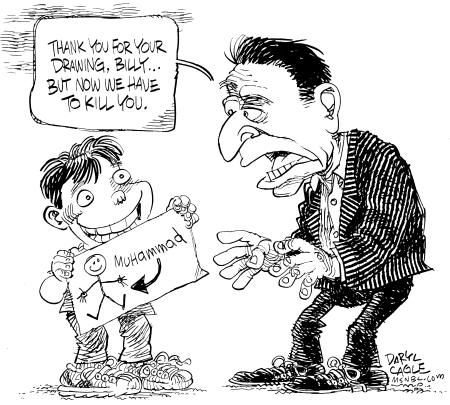
Reprinting Those Horrible, Offensive Muhammad Cartoons
There are riots around the Muslim world, with embassies burning; and 12 poor Danish cartoonists who now fear for their lives have gone into hiding, under 24-hour police protection, as millions of angry Muslims call for their execution. Anyone who hasn’t seen the cartoons of the Prophet Muhammad must think they are jarringly offensive –and since very few newspapers in America have chosen to print the cartoons, what else is there to think?
To Muslims, depictions of people – and especially depictions of Muhammad – are forbidden, so it doesn’t matter if the cartoons make a statement or not; the very idea that cartoons of Muhammad exist is offensive. To a Western eye, there is little that is offensive in the cartoons. News reports refer to the “Danish cartoons including one showing a bomb in Muhammad’s turban,” and even that is an exaggeration, describing the 12 cartoons by mentioning only the one that Westerners could imagine causing some offense. Truly offensive cartoons, which never appeared in the Danish newspaper, have been circulated to Muslim crowds to whip up their angry religious fervor.
The overblown reaction in Muslim countries to the blasphemy of the cartoons is what the story has become, as streets filled with violent protestors demand that the infidels in other countries respect a Muslim taboo. Clearly there are many in the Muslim world that are eager to stoke the fires of a clash of civilizations; they think they have found their popular issue with the cartoons.
Politically correct commentators in the West devote equal time to condemning Denmark’s Jylland-Posten newspaper as they do for the crowds that are burning embassies and inciting even more violence. Almost every newspaper in America has refused to reprint the cartoons, leaving readers to believe that if they saw the cartoons, they would be offended too. In fact, if American readers saw the cartoons we would say, “This? This is what makes them so angry? That’s crazy!”
New and truly offensive Muhammad images are popping up all over the Web. The images show a Muhammad toy on a Lego box, having sex with an underage Lego Aysha girl, Muhammad on products such as urinals and toilet paper, and lots of usage of the original Danish cartoons, revamped to make them more offensive with references to sex, pork, drugs and Danish products that are boycotted in Arab countries.
Not to be outdone, a Belgian-Dutch Islamic political organization, the Arab European League (AEL) has started posting cartoons that they think will be as offensive as possible to the Danish. They describe their effort this way:
“After the lectures that Arabs and Muslims received from Europeans on Freedom of Speech and on Tolerance. And after … many European newspapers republished the Danish cartoons on the Prophet Mohammed. AEL decided to enter the cartoon business and to use our right to artistic expression. Just like the newspapers in Europe claim that they only want to defend the freedom of speech and do not desire to stigmatize Muslims, we also do stress that our cartoons are not meant as an offence to anybody and ought not to be taken as a statement against any group, community or historical fact. If it is the time to break Taboos and cross all the red lines, we certainly do not want to stay behind.”
One cartoon on the AEL site has gotten the most attention; it features Holocaust victim Anne Frank in bed with Adolf Hitler, apparently after having sex, Hitler smokes a cigarette and says, “Write this one in your diary, Anne.” Aside from that cartoon, it appears that the cartoons that the AEL thinks will be most offensive to Danes are anti-Semitic and Holocaust denial cartoons that are not different from what passes as everyday fare in Arab newspapers. Of course, for the AEL to make their point effectively, we’ll need to see the Danes respond by marching in the streets, burning embassies, and calling for the executions of AEL cartoonists.
The proper response to an insult in the press is to respond with more speech, rather than violence in the streets, and the escalating war of offensive cartoons is simply speech. But as the reactions become uglier, readers may believe that the truly offensive images they see on the Web are the kind of cartoons that set off this clash of civilizations, rather than the dull, banal Danish cartoons that they haven’t seen. It is important that readers understand what a small spark set off this religious bomb. American editors should rethink their decision not to reprint the original Danish cartoons.
Daryl Cagle is the political cartoonist for MSNBC.com. He is a past president of the National Cartoonists Society and his cartoons are syndicated to over eight hundred newspapers, including the paper you are reading. His book, “The Best Political Cartoons of the Year, 2006 Edition” and “The Big Book of Bush Cartoons” is available in bookstores and Amazon.com now.
Cartoonists and Cockroaches

A column in Sunday’s Los Angeles Times starts off like this:
“POPE JOHN XXIII, or ‘Good Pope John,’ remains one of the most beloved figures in recent Catholic history. Among treasured memories of this kindly, roly-poly pope, perhaps none looms larger than the evening of Oct. 11, 1962, when he told a vast crowd on a moonlit night in St. Peter’s Square, ‘Go home tonight and give your children a kiss, and tell them that this kiss comes from the pope.’ When German Cardinal Joseph Ratzinger, the Vatican’s stern doctrinal enforcer, was elected as Benedict XVI in April, an editorial cartoon in an Italian paper showed him looking at a similar crowd and saying, ‘Go home tonight and give your children a spanking, and tell them that this spanking comes from the pope.’
“In a nutshell, the cartoon captured many people’s expectations of Benedict XVI: a hard-line taskmaster who would bring liberals and dissenters in Roman Catholicism to heel.”
Speakers and columnists, like this one, often quote cartoons but seldom mention the name of the cartoonist. With this writer, one fourth of his column came from an uncredited cartoonist. (I think it is fitting that one fourth of my own column starts off with a quote from a writer whom I have chosen not to name.) Writers are almost always named when they are quoted, but cartoons seem to be mere anecdotes that deserve no attribution beyond, “I saw this cartoon …”
An unnamed op-ed page editor at the Los Angeles Times told me that he doesn’t like political cartoons because they tend to “overpower the words that surround them.” He went on to tell me that his two favorite cartoonists are Tom Toles and Ted Rall, two cartoonists with rudimentary drawing styles who put lots of words into their cartoons; this editor liked these cartoonists because they were “more like writers than artists.”
There seems to be a natural friction between the “picture people” and the “word people” who are troubled by those powerful pictures. A famously unnamed editor at The New York Times is quoted as saying, “We would never hire an editorial cartoonist at the Times, because we would never give so much power to one man.” Another unnamed New York Times editor is quoted as saying, “We don’t like editorial cartoons at the Times because you can’t edit a cartoon like you can edit words.”
Editors see cartoonists as “bomb throwers,” because cartoonists enjoy a different set of journalist ethics than writers. Cartoonists can put any words into the mouth of a public figure, whether those words were actual quotes or not. Cartoons make readers angry. A strong political cartoon generates much more mail from readers than the strongest words. Most editors are timid and want to avoid controversy; they choose to run syndicated cartoons that are unobjectionable gags about current topics. Cartoonists call this “Newsweekification” after the inoffensive, bland and opinionless – but funny – political cartoons that Newsweek magazine chooses to reprint each week, further trivializing political cartoons.
The power and effectiveness of political cartoons cause more and more newspapers to avoid cartoons. There are half as many editorial cartoonist jobs as there were 75 years ago. Of the biggest newspapers in America – The Wall Street Journal, USA Today, The New York Times, the New York Daily News, the Chicago Tribune – none have political cartoonists on staff.
The newspaper industry often complains about a dwindling and aging readership as younger readers prefer to get their news through other media. The old-line “word people” lament that youngsters nowadays get their news from Jon Stewart on “The Daily Show.” In fact, most young people get their news from political cartoons. Every state in the United States has middle and high school students interpret an editorial cartoon as part of state-mandated testing. Teachers who must “teach to the test” include political cartoons in their classes. Students learn their current events through political cartoons and, ironically, most of the students see newspaper political cartoons on the Internet rather than on paper (visit www.cagle.com). The “word people” who run newspapers have “Newspapers In Education” programs to try to develop a younger readership, but when a stack of newspapers is dropped on a teacher’s doorstep once a week, there is usually only one political cartoon on the editorial page – not very useful to a teacher who only needs the newspaper to teach about editorial cartoons.
Perhaps in the future we’ll see this turn around, and see more columns like this one, where cartoonists’ names are mentioned and writers’ names are not; when that happens, I expect traditional newspapers will have long gone extinct. Just as the cockroach will continue to roam the Earth long after mankind has disappeared, political cartoonists will still be crawling out from dark corners long after the “word people” have killed off newspapers.
Daryl Cagle is a political cartoonist and blogger for MSNBC.com. He is a past president of the National Cartoonists Society and his cartoons are syndicated to more than 800 newspapers, including the paper you are reading. His books “The BIG Book of Bush Cartoons” and “The Best Political Cartoons of the Year, 2005 Edition,” are available in bookstores now.

